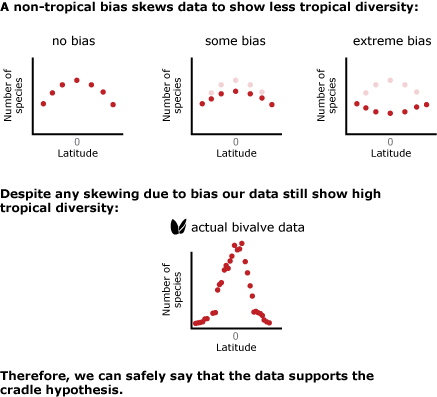The anti-tropical bias in the fossil record could have affected the evidence we used to evaluate the cradle hypothesis — data on whether new species and genera tend to first appear in tropical or non-tropical rocks. However, in that case, the non-tropical bias would have tended to work against our hypothesis, making it appear that more species and genera first appear in non-tropical rocks than in tropical ones. Since we still found support for the hypothesis — evidence that species and genera tend to appear in tropical rocks, despite the poor quality of this record — we can be confident that the bias didn’t lead us to an incorrect conclusion.

